Carnival of Mathematics 114
By Murray Bourne, 11 Sep 2014
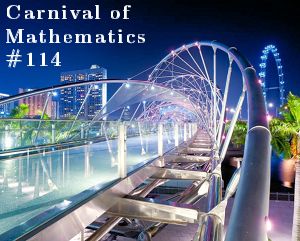
Helix Bridge and Flyer, Singapore
114 is a sphenic number (the product of 3 distinct prime numbers):
114 = 2 × 3 × 19
It's also a repdigit: 114 = 2227 (the digits repeat in the base 7 representation)
It's the 19th number in the Padovan sequence, given by the recurrence relation P(n) = P(n − 2) + P(n − 3), and where the first 3 terms are 1.
114 is an abundant number (where the sum of its proper divisors is greater than itself):
1 + 2 + 3 + 6 + 19 + 38 + 57 > 114
That's appropriate, as we have abundant posts for this, the 114th Carnival of Mathematics!
On with the show.
1. Visual math
a. The Spellbinding Mathematical GIFs Of Dave Whyte
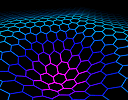 |
Now here are some animations that could be the basis for some interesting class discussion. See |
b. 6th meeting on Origami, Science, Math, and Education
 |
Andrea Hawksley gives us a nice roundup of the recent meeting on Origami, Science Math and Educaion. She features some of her own work, as well as other gems that were presented. See: |
6th meeting on Origami, Science, Math, and Education (6OSME)
While you're there, mouse over Andrea's name in the header of her blog. It's cute.
c. Random Walks Mural
That's logical, as it's the name of his blog! See
2. Rants
a. BBC Sport's Anti-Smartness Bias
See:
BBC Sport's Anti-Smartness Bias
b. The science at the end of the Whoniverse
 |
In a similar vein, Gilead of "Tycho's Nose" rants about inaccuracies (or part-truths) in background equations as seen in the new Doctor Who series. See: |
c. Stem and Leaf – is there a point?
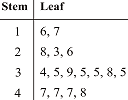 |
Here's a rant of a different nature. Stephen Cavadino of "cavmaths" questions whether stem-and-leaf plots are a necessary part of the math curriculum. See: |
3. Exploring math ideas
a. When do n and 2n have the same digits?
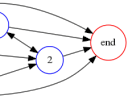 |
Mark Dominus provides us with a neat exploration of numbers that are permutations of each other. His first example is the decimal expansion of n/7. |
See:
When do n and 2n have the same digits?
b. The Revenge of the Perko Pair
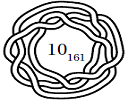 |
Richard Elwes introduces us to an interesting knotty problem. It turns out this generally accepted picture is wrong... See how at: |
c. Looking for Life
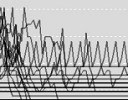 |
Antonio Sánchez Chinchón presents an R implementation of Conway's Game of Life, a cellular automaton that could support universal computation. He looks for periodic objects able to do computations in the Game Of Life. See Looking for Life [no longer available] |
d. When Greedy Algorithms are Perfect: the Matroid
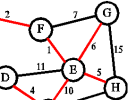 Jeremy Kun of "Math ∩ Programming" explores optimal greedy algorithms and matroids.
Jeremy Kun of "Math ∩ Programming" explores optimal greedy algorithms and matroids.
See:
When Greedy Algorithms are Perfect: the Matroid
e. Arc length of a spiral around a paraboloid
This post, right here on "squareCircleZ", was inspired by a reader's question. He makes solar cookers for use in Africa and wanted to know how to construct the spiral length around his cookers. It's some "real-world" math that involves sustainable, cheap energy.
See:
Arc length of a spiral around a paraboloid
5. Math history
a. Look Ma, No Zero
|
0 |
In a lot to do about nothing, Evelyn Lamb of the Scientific American blog, recounts her journey of discovery with her students, which involved decipering Plimpton, the 4000 year-old Babylonian tablet. |
So how did the Babylonians work in base 60, without 0 as a place holder?
See:
b. How The Ancient Egyptians (Should Have) Built The Pyramids
See:
How The Ancient Egyptians (Should Have) Built The Pyramids
6. Plug
 This post is a plug for an experimental MOOC (Massive Open Online Course). The blurb says:
This post is a plug for an experimental MOOC (Massive Open Online Course). The blurb says:
"Citizen Maths is an online resource anyone can use — to discover how maths can be a powerful tool for solving those problems that come up at work and in your life."
See:
7. Reflections
 So, what is mathematics? Shecky Riemann of "Math-Frolic" has a quote from How Mathematicians Think, by William Byers, which ponders that math is a series of situations where we are led to observe,
So, what is mathematics? Shecky Riemann of "Math-Frolic" has a quote from How Mathematicians Think, by William Byers, which ponders that math is a series of situations where we are led to observe,
8. Final bit
I hope you've enjoyed Mathematics Carnival #114, coming to you from Singapore.
The next carnival will be at MathTuition88, slated for October 2014. See where and how to submit.
Image credits:
Singapore Helix and Flyer by ensogo, accessed from http://www.ensogo.com.ph/escapes/singapore-flyer-cruise-09092012.html
BBC Sport logo, by BBC, accessed from http://www.bbc.com/sport/0/
Stem & leaf plot by ck-12.org, accessed from http://www.ck12.org/book/Basic-Probability-and-Statistics-A-Full-Course/r4/section/7.2/
Reflection, by Marcia Birken, accessed from http://alumnae.mtholyoke.edu/blog/light-motifs-marcia-birkens-images-meld-math-and-art/
All other images are from the posts to which they link. If you have any objections to their use in this manner, let me know and I'll remove them.
See the 5 Comments below.
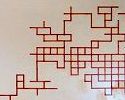

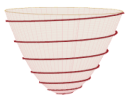

11 Sep 2014 at 3:17 pm [Comment permalink]
Referring to the "Zero" article, it says there was no zero in Babylonian math.
However, this earlier Scientific American article includes an image of a zero symbol.
Who's correct?
13 Sep 2014 at 3:53 am [Comment permalink]
[…] The next issue of the Carnival of Mathematics, rounding up blog posts from the month of August, and compiled by Murray Bourne, is now online at SquareCircleZ. […]
13 Sep 2014 at 5:44 am [Comment permalink]
I suspect the '>' sign in the 'abundant number' paragraph should really be a '<'. Not only is the statement rendered true (as 114<126), it actually fits the explanation of what an abundant number is.
13 Sep 2014 at 3:09 pm [Comment permalink]
Good catch, Oliver. I have amended the direction of the inequality.
15 Sep 2014 at 10:22 pm [Comment permalink]
Stephen: Hi, I wrote the article about the Babylonian lack of zero. As I wrote there (in the 5th paragraph, if you want to read it there), it's a bit of an oversimplification to say Babylonians had no zero. They did eventually use a symbol to indicate an empty place within a number, but they never used it at the end of a number, so you would never be able to tell a 1 from a 60, for example, except by context. The Babylonian symbol for zero was a placeholder, not a full-fledged number with almost all the properties of any other number, the way the Indian zero was.